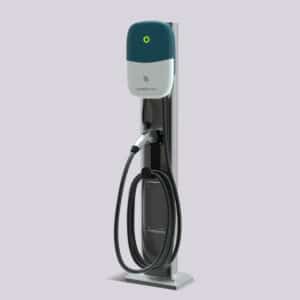- Overview of Charging Levels
- Factors to Consider When Choosing a Charging Level
- Benefits and Drawbacks of Each Charging Level
- Case Studies and Examples
- Conclusion
Selecting the appropriate charging level for your parking facility is crucial in meeting the needs of electric vehicle (EV) users while optimizing operational efficiency and costs. With the growing popularity of EVs, it’s essential for parking facility owners and managers to understand the different charging levels and determine the best fit for their sites. This article aims to provide comprehensive guidance on choosing the optimal charging level for various types of parking facilities.
Overview of Charging Levels
- Level 1 (Basic): Level 1 charging, also known as basic charging, uses a standard household outlet (120 volts) and typically provides a charging rate of 2-5 miles of range per hour. This level is suitable for locations where vehicles are parked for extended periods, such as residential areas and long-term parking facilities. While it has the advantage of low installation costs, its slow charging speed makes it less suitable for high-turnover or short-term parking environments.
- Level 2 (Standard): Level 2 charging operates at 240 volts and delivers a charging rate of 10-20 miles of range per hour. This level strikes a balance between cost and performance, making it ideal for commercial properties, workplaces, and public parking facilities where vehicles are parked for a few hours. Level 2 chargers require more substantial electrical infrastructure than Level 1 but offer significantly faster charging times.
- Level 3 (DC Fast Charging): Level 3, or DC fast charging, is the most powerful and provides the quickest charging times, delivering up to 80% charge in 20-30 minutes. Operating at 480 volts, this level is best suited for high-traffic areas, quick turnaround locations, and public charging stations. However, the high installation and maintenance costs, along with significant electrical infrastructure requirements, make it a considerable investment.
Factors to Consider When Choosing a Charging Level
- Usage Patterns: Understanding the usage patterns of your parking facility is essential. Consider the types of users (commuters, residents, visitors) and the average parking duration. For facilities with long-term parking, such as residential or airport parking, Level 1 or Level 2 charging may be sufficient. In contrast, facilities with high turnover rates, such as shopping centers or highway rest stops, might benefit from Level 3 chargers to accommodate quick charging needs.
- Infrastructure and Installation Costs: Evaluate the existing electrical capacity of your facility and the potential need for upgrades. Level 1 chargers have minimal infrastructure requirements, making them cost-effective. Level 2 chargers, while more expensive to install, offer a good balance of cost and performance. Level 3 chargers require significant electrical upgrades and are the most costly to install and maintain. It’s crucial to balance the initial investment with the expected usage and revenue.
- Future-Proofing: Anticipating the increase in EV adoption is vital for future-proofing your charging infrastructure. Consider the scalability and upgradability of your chosen solution. Level 2 chargers offer flexibility and can be expanded as demand grows. Installing conduit and infrastructure that can accommodate future upgrades to Level 3 charging can also be a wise investment.
Benefits and Drawbacks of Each Charging Level
- Level 1 Benefits: Low installation cost, easy to install with existing electrical infrastructure. Drawbacks: Slow charging times, suitable only for long-term parking.
- Level 2 Benefits: Faster charging times, versatile for various parking environments, moderate installation costs. Drawbacks: May require electrical upgrades, not as fast as Level 3 for high-turnover locations.
- Level 3 Benefits: Fastest charging times, ideal for high-traffic and quick turnaround locations. Drawbacks: High installation and maintenance costs, significant infrastructure requirements.
Case Studies and Examples
Consider the case of a residential apartment complex that installed Level 1 chargers in its parking garage. Residents who leave their vehicles overnight find this level sufficient. In contrast, a downtown commercial parking garage opted for Level 2 chargers, balancing cost and the need for faster charging times for daytim
e visitors. A highway rest stop installed Level 3 chargers to serve travelers who need quick top-ups, demonstrating the suitability of different charging levels for varying needs.
Conclusion
Choosing the right charging level for your parking facility is a strategic decision that impacts both user satisfaction and operational efficiency. By understanding the different charging levels, considering usage patterns, infrastructure costs, and future needs, facility managers can make informed choices that benefit both their operations and their customers.
Featured products
-
 Add To Cart Select options
Add To Cart Select options
Nick Zamanov is a head of sales and business development at Cyber Switching. He is an expert in EV infrastructure space and he is an EV enthusiast since 2012, Since then Nick strongly believed that electric vehicles would eventually replace Internal Combustion Engine (ICE) cars.



